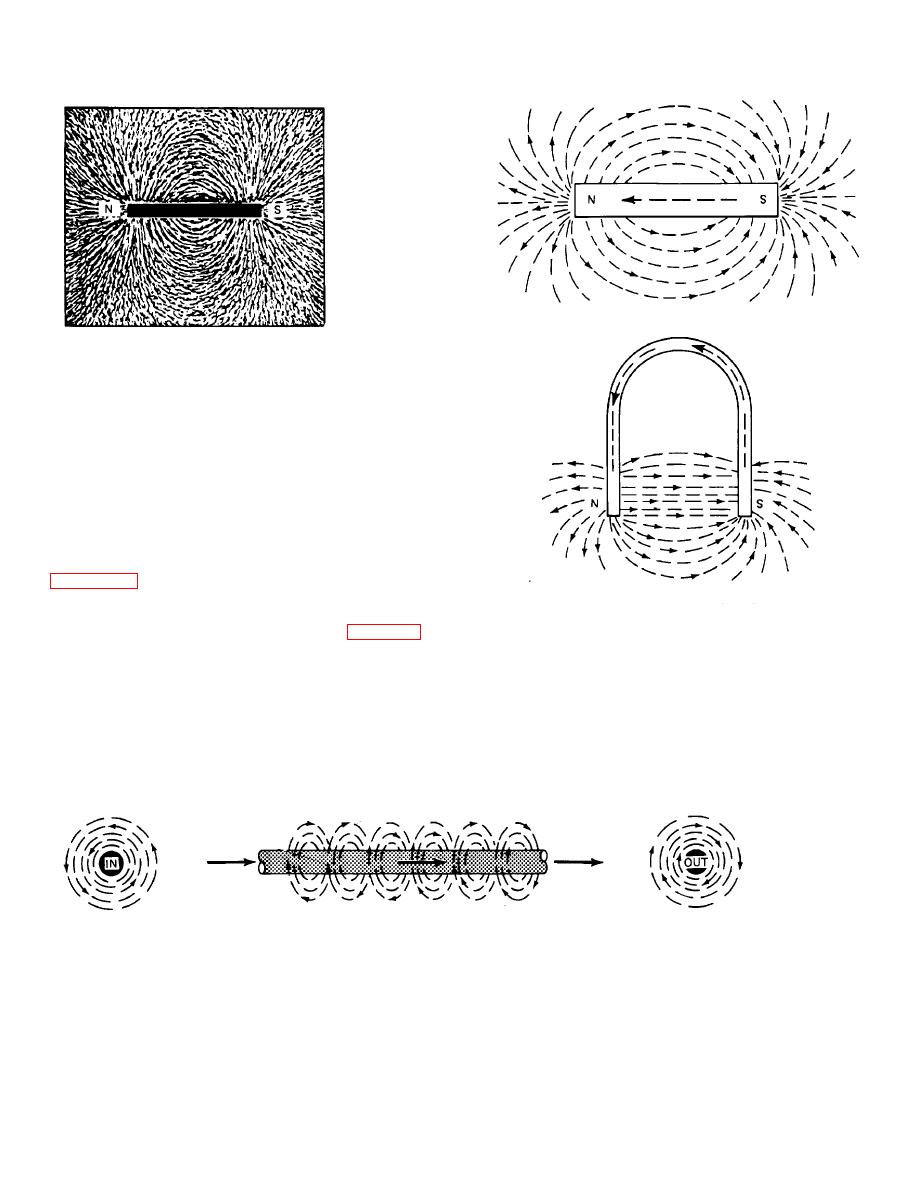
TM 9-8000
Figure 11-15. (3) The lines of force repel each other along
along their entire length and try to push each other apart.
(4) The rubberband characteristic opposes the
push-apart characteristic.
(5) The lines of force never cross each other.
(6) The magnetic lines of force, taken together,
are referred to as the magnetic field of the magnet.
c. Bar and Horseshoe Magnets. The magnetic
fields of a bar and of a horseshoe magnet are shown in
and pass from the north to the south pole.
Figure 11-16. Bar and Horseshoe Magnet.
d. Effects Between Magnetic Poles (Fig. 11-17).
close to each other, lines of force going in the same
When two unlike magnetic poles are brought together,
direction are brought near each other. Because these
they attract. But when like magnetic poles are brought
lines of force attempt to push apart, a repelling effect
together, they repel. These actions can be explained in
results between the like poles.
terms of the rubberband and the push-apart
characteristics. When unlike poles are brought close to
11-14. Electromagnetism.
each other, the magnetic lines of force pass from the
north to the south poles. They try to shorten (like
a. An electric current (flow of electrons) always
rubberbands), and, therefor try to pull the two poles
produces a magnetic field. In the wire
together. On the other hand, if like poles are brought
TA233531
Figure 11-17. Effects Between Magnetic Poles.
11-14




 Previous Page
Previous Page
